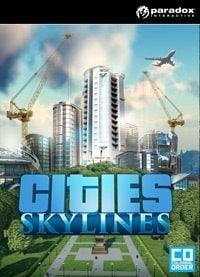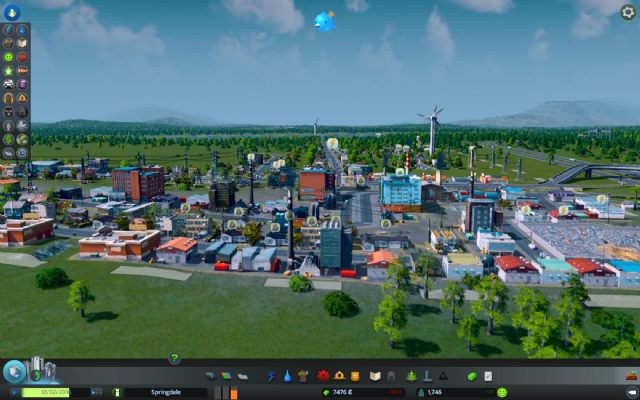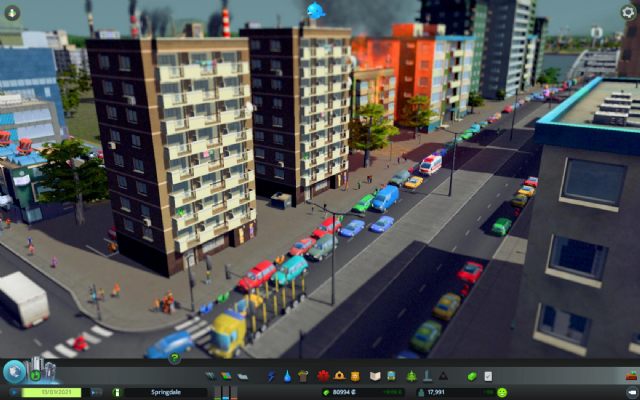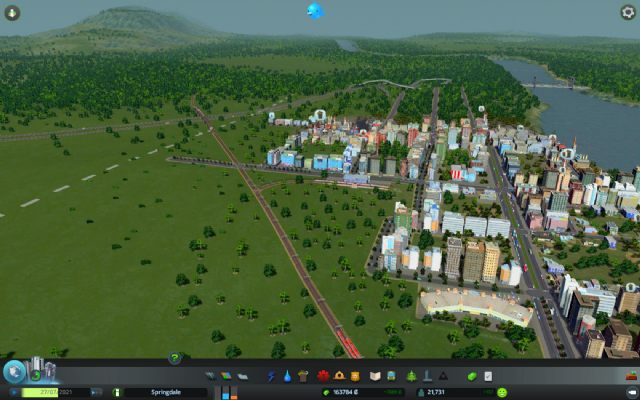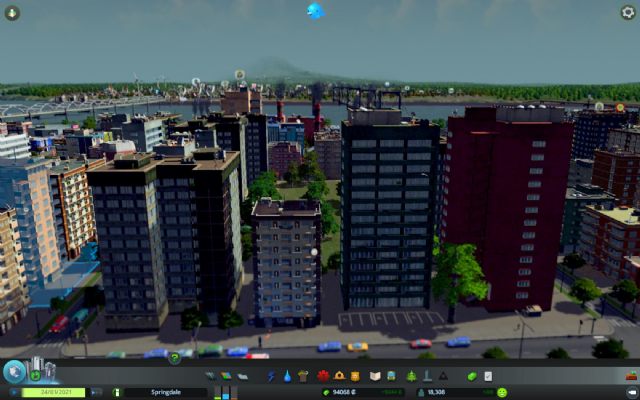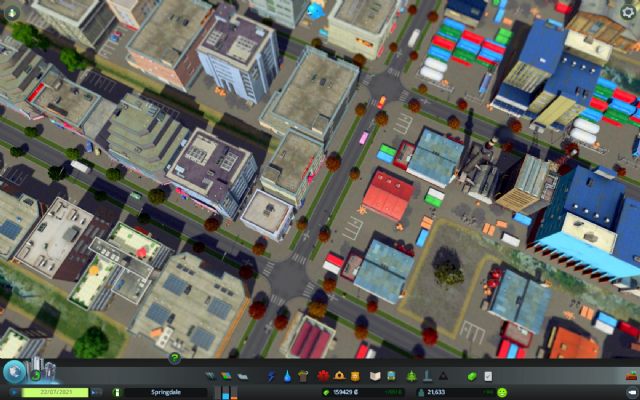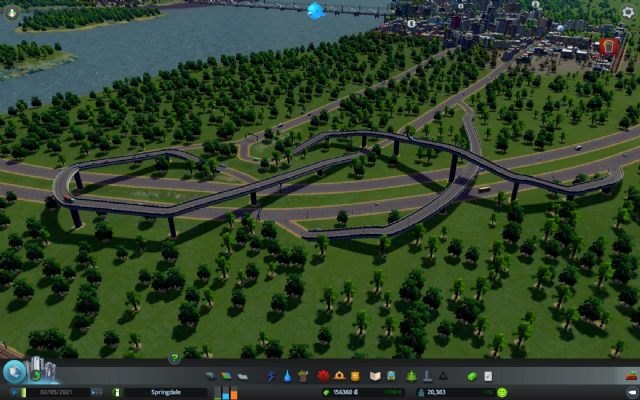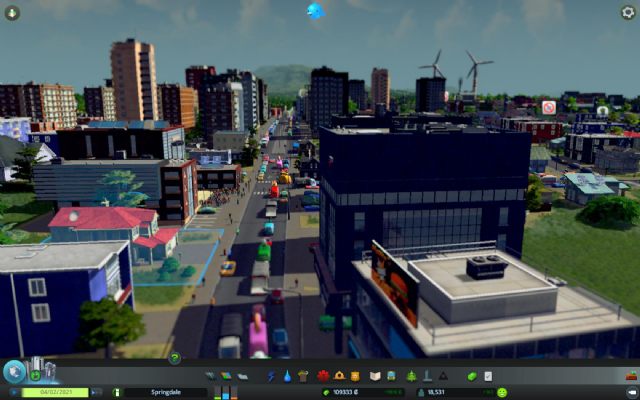Cities: Skylines Review - Farewell SimCity
City building games lovers finally got what they asked for. With help from Paradox Interactive, Colossal Order's Cities: Skylines is a worthy successor of SimCity.
The review is based on the PC version.
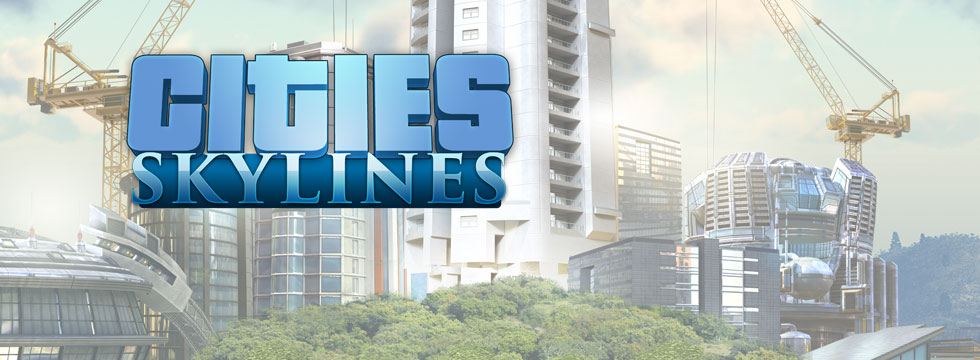
- Huge maps;
- a ton of possibilities;
- public transport;
- a wide range of creation tools;
- informative details on citizens and buildings;
- complex management of the budget and social matters;
- engaging gameplay;
- fair optimization.
- graphical restrictions;
- troublesome road development;
- emergency vehicles.
After a huge fiasco of the recent Cities XXL, all fans of the city-builder genre have had their eyes fixed at Cities: Skylines – a brand new title of this kind from a small Finnish studio Colossal Order. Was the experience taken from the two quite successful recent creations – Cities in Motion – (focused on managing public transport) put to good use in the process of making a title on a much bigger scale? In Skylines transport is just a fraction of the solid gameplay, which by the way, was designed in a meaningful manner – despite a few missteps that effect the final foundation of this virtual urban empire.
We have what the other guys don’t!
From the start the creators were intentionally referencing the competition, starting with the newest Sim City, since they wanted to fulfill the expectations of the gamers correcting, amongst many things, the mistakes that drove the virtual planners and mayors mad in the first place. A lack of a ‘always online’ requirement? Done. A complex editor? Also there. Big maps that allow us to fulfill our fantasies? Check that one off. Actually, when it comes to the latter, one can get an impression that the Finnish studio has shown the experienced team of the now non-existent Maxis, that literally big things can be done in that department – especially when in comparison to the infamous Sim City. There is a dozen of vast maps, while each one of them represents a bit different setting - both when it comes to terrain formation and the resources, and natural conditions. What is most important, we don’t get thrown into deep water from the get-go – at the start we only get a fraction of the terrain at our disposal, which, along with the growth of our metropoly can be purchased for a symbolic fee. I can promise you that before you fill the entire map with buildings, roads and various attractions, you will have spent a couple dozen hours with the game. There are a lot of things to do.
If you have encountered other games from the genre, you certainly won’t be surprised with what Cities: Skylines has to offer. Needless to say, in the game we get to build a city from the very first street, to the monumental skyscrapers which will latter become the symbol of our creation. Luckily, the developers didn’t mess up the most essential element of a city-builder – the interface in City: Skylines is comfortable in use, and yet minimalistic. Access to certain options and buildings is given to us relatively quickly, which is crucial taking into account the fair amount of in-game objects. Expanding our city basically comes down to three areas: residential, service and industrial along with a network of roads and public service buildings along the way. It is the planning of the communication network which is the main factor on which the utilization of the terrain relies on. Whether or not will we be able to raise a city that will be a pleasant sight depends on locating the aforementioned zones along with the infrastructure.
Taking the highway downtown
It’s good to take our time and think thorough why we are building the next road – will it be one of the main streets or a smaller road for a residential district? The developers give us a wide range of possibilities, allowing to lay one of the 20 different pavement types, ranging from divided highways to large freeways. Apart from that we can construct roundabouts, overpasses, and bridges – making our creative capability that much greater. Tools of construction work really well, although building roads latter on can be a dire task due to the density of the constructed buildings. It usually requires us to design entire districts, along with adjacent streets and neighboring buildings. Size of a street not only does influence the bandwidth – a larger street means more parking space on the shoulder, or even the appearance of the bus bays which make traffic less of an issue when planning a complex system of public transport.
The developers don’t overwhelm us with the magnitude of the possibilities right away, as access is given gradually. The development system is based on milestones – moments in which our metropolis exceeds a certain amount of citizens. At that instant, our construction menu is enriched by options to raise another buildings and satisfy the needs of our people. The latter become known in two ways – the first being the in-game counterpart of Twitter which shows citizens’ opinions on various topics ranging from basic needs like access to drinkable water or electricity, to comments on current events. The alternative being a line of icons appearing above individual houses and symbolizing the problems within. At times the notifications can be annoying, but it’s soon hard to imagine a better and more effective way of interacting with the player.
You have to make it on this budget!
Since the very beginning a range of tools allowing us to maintain the financial discipline and satisfying citizens is at our disposal. The developers suggest reasonable ways to maintain our budget – we can control taxes for certain zones, or limit the spending on certain public departments like health care, the police or garbage collection. A substantial influence on the finances can also be made by the laws passed in our districts. Thanks to them we can, for example, install electricity counters in every house (which will allow to save energy), make smoking illegal or introduce free public transport. Obviously, all of those will have their toll on our budget, but in the long run , the profits of introducing such regulations become clearly visible.
It’s a joy to see every action and decision made have its’ own casual link in Cities: Skylines. When, let’s say, we set the sewage pump too close to the source of drinking water, after a while our citizens will start to complain about diseases of the digestive system. If not dealt with, the problem turns into an epidemic, while we have to be cautious and steadily increase the number of beds in hospitals and clinics. Without a doubt, we won’t be able to save everyone – at that time we will make use of the caravans which will have to take our citizens to the place of their eternal rest. For every action there is a reaction, which lets us learn from our mistakes. We can be certain that this will be necessary as it’s very hard to effectively manage the available resources the first time around and many will surely have to start over.
Intensive care looks only so good on TV...
Nevertheless, the game isn’t free of some flaws, that at times manage to cause quite a chaos. The issue of road building has been discussed before, but what irritates to no end is the element of emergency vehicles that often a times instead of making life easier, complicates it even more. An emergency vehicle status is non-existent – despite the fact that ambulances and fire trucks have their signals on, they sadly can’t get through traffic and patiently wait with other cars, diligently awaiting their turn. As you can imagine, before help gets there on time, the patient is already dead and the building is already burnt to a crisp. That is that much more surprising considering the fact that, for example, buses can switch to the left lane before making a turn and appear at the stop, even though it’s going in the different direction. Even if the intervention is a success though, the traffic in the neighborhood around a small house that is on fire becomes completely paralyzed. Public service vehicles, instead of parking on the side, very often stop in the middle of the street completely blocking the traffic. Taking into consideration that putting out a fire usually takes two minutes in this game, during that time a surprisingly long line of cars forms behind the emergency vehicle. In contrast to that – public transport works extremely well. No wonder though – Colossal Order has cut their teeth in that department. Planning new bus lines and metro stations is effortless, and railroads and product transport are hellishly efficient.
Even though in-game maps are certainly large areas, on which with time dozens of building appear, the developers have managed to tame the game engine and make it so that even in a great metropolis navigation is fluent. Indeed simulating a city with a population of hundreds requires a strong PC, and the game can freeze for a second when browsing the city. However, for a title of this scale it looks very good. Certainly – everything has a price. Due to that we are given a poorer quality of graphics, which is clearly visible when zooming in. The Finnish developers have decided on a blur effect, which allows to mask imperfections and restricts the field of view to the nearby vicinity. From afar a lively metropolis certainly looks beautiful, but in this perspective we don’t see all the vehicles on the streets or even the people. Apart from that, any form of weather conditions or the day and night cycle are absent – it’s sunny all the time. A little change would be certainly be welcome in this aspect. Despite all of that it’s hard not to notice the effort that has been put into this game – every citizen has their own private information, and certain buildings have various names, which makes instantly tracking our favorite individual easy and effortless.
Let’s do business...
After a disappointing Cities XXL we get a title that certainly will deliver hundreds of hours of gameplay on a satisfying level. Colossal Order’s debut in the city-builder genre is a success - it’s an elaborate game doing a good job simulating the processes that occur daily in a large metropolis. We get to face many issues that trouble mayors, involving both the social aspects, as well as the economy and health care. Although, certain mishaps that can annoy were not avoided, it’s clearly the best game out there that lets us create the city of our dreams. The Finnish studio has made a game for a well-deserved 8/10. Now it’s time to wait and see what the future will bring and how will this new series of city-builders develop. The timeless Sim City 4 has finally found a worthy rival.
Cities: Skylines
Cities: Skylines Review - Farewell SimCity
City building games lovers finally got what they asked for. With help from Paradox Interactive, Colossal Order's Cities: Skylines is a worthy successor of SimCity.
